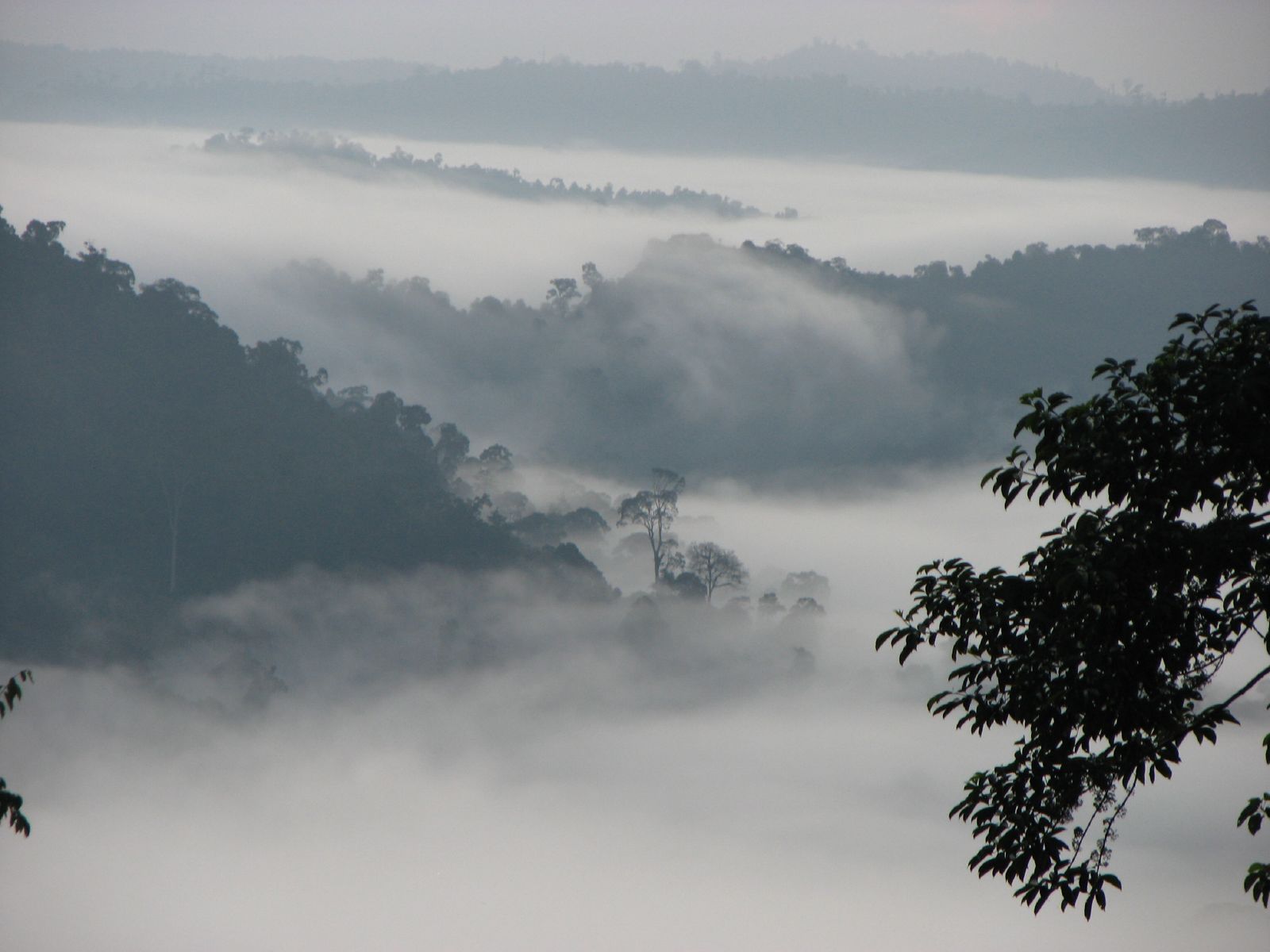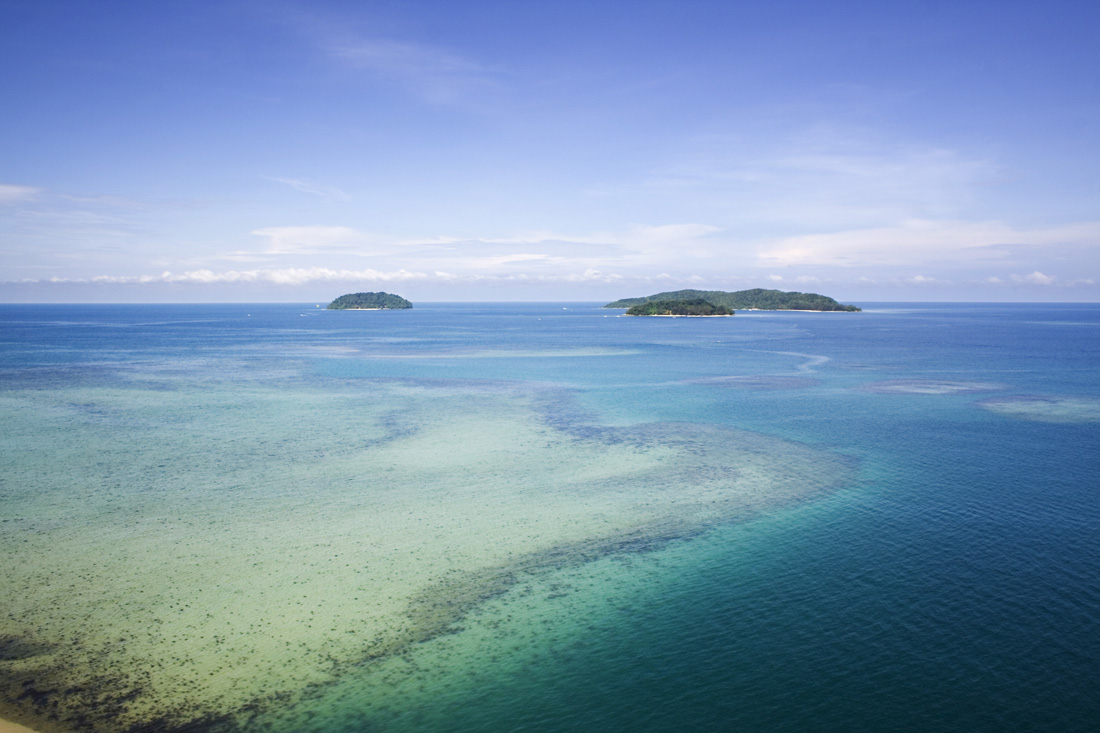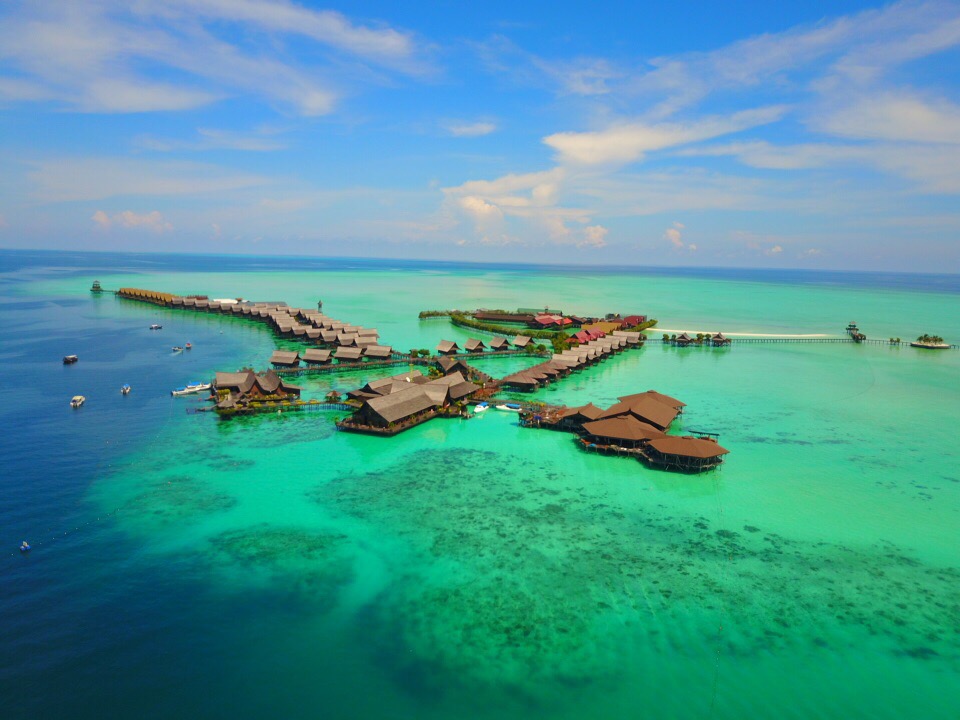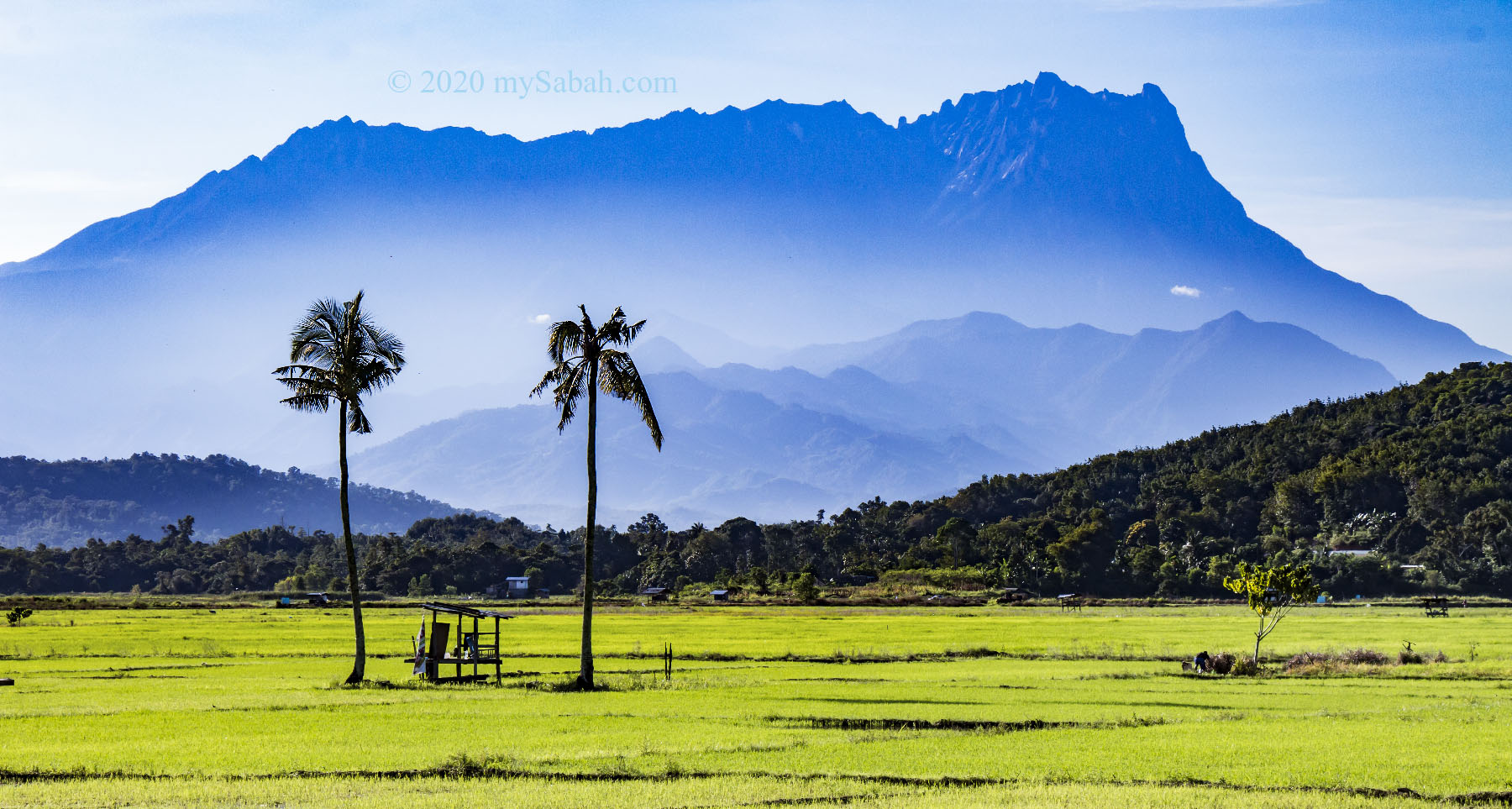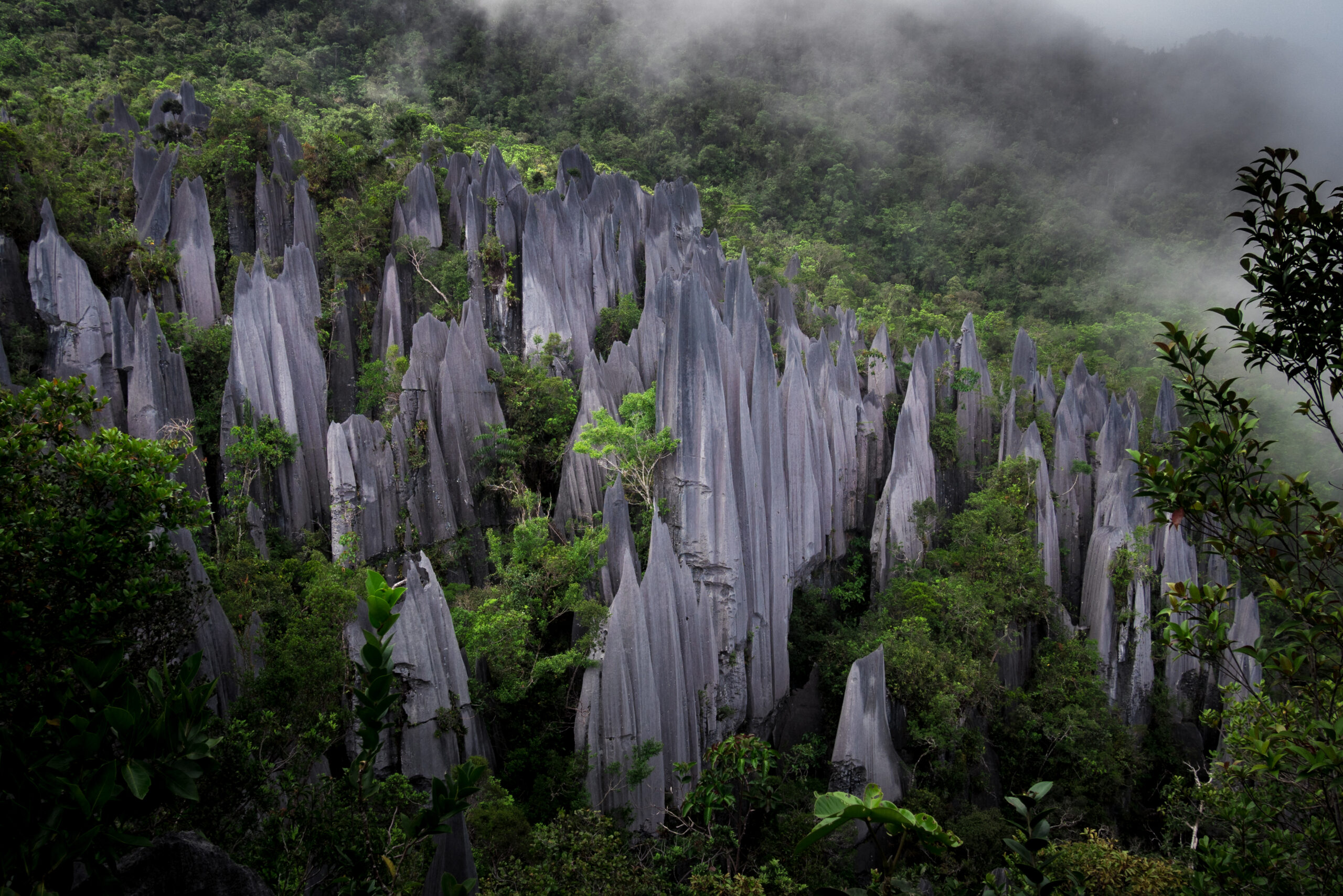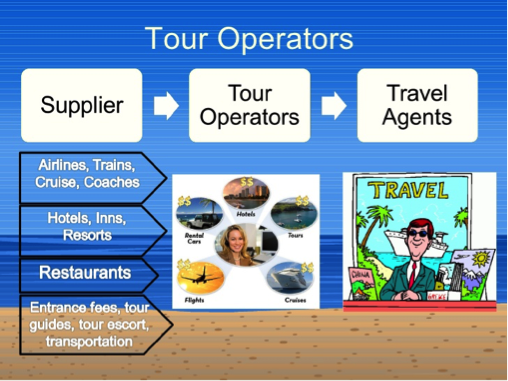“But ask the animals, and they will teach you, or the birds in the sky, and they will tell you; or speak to the earth, and it will teach you, or let the fish in the sea inform you.”
Job 12: 7 – 8 (NIV)
“He who does not travel does not know the value of men.”
Moorish proverb
Discover the purpose of your work and your corporation
What is your purpose in work?
- Your investment will foster local development and elevate social standards.
- You will help to promote responsible travel for environmental conservation.
What drives your corporation’s core value?
- Capture the new opportunity to invest in the burgeoning market and apply international best practices to advance the eco-tourism industry in Borneo.
- Expand your company’s presence in the dynamic Asia Pacific region.
Ecotourism destinations in Borneo
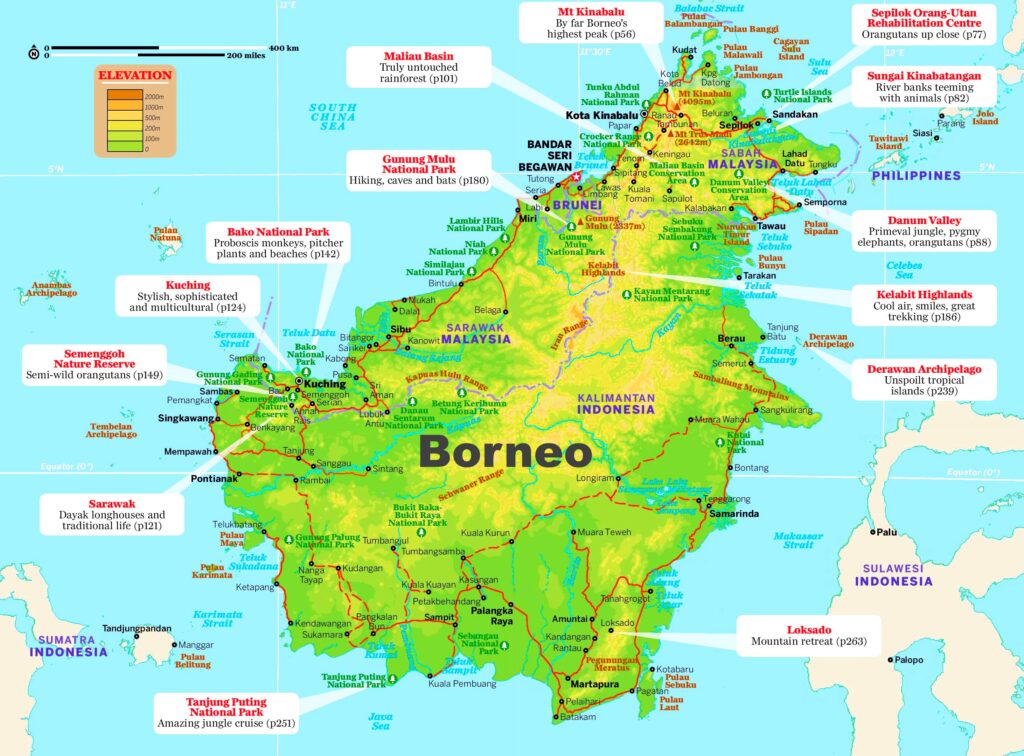
1.0 Executive Summary:
Mission:
- Establish eco-tourism projects in strategic alignment with stakeholders.
- Stage 1: Develop and operate 21 nature tourism projects in Borneo.
Key Management Team:
- Mentors: visionary pioneers and industry leaders with a vast global network. They provide invaluable guidance and inspiration.
- Coaches: mission-oriented industry experts who offer practical solutions to challenges, ensuring the team stays focused on its objectives.
- Partners: Industry leaders, government agencies, investment managers, and operators.
Product Benefits:
- Unique eco-tourism destinations.
- Guaranteed income from anchor customers.
- Exclusive development and management rights.
Target Market:
- Short term: North Asia, Indochina, Russia, India, Middle East, Indonesia, Malaysia, Brunei.
- Midterm: Oceania, Europe, USA.
Financial Projections:
- Investment: US$20 million (Start-up stage).
- Cost: US$18.12 million/year.
- Revenue: US$30.2 million/year.
- Income: US$12.08 million/year.
- Payback: 4 years.

Unique Business Model:
- Tap into established sites.
- Strategic alliances for guaranteed income.
- Top international management team.
- Vertical and horizontal integration.
- Competitive advantage in Borneo nature tourism.
2.0 Mission
2.1 Problem
- Identity: Borneo Island lacks a unified image for its nature tourism.
- Investment Gap: The tourism sector in Borneo faces challenges such as insufficient foreign investment, limited international exposure, and a shortage of professional expertise in natural habitat conservation, wildlife protection, and nature destination tourism.
- Service Standards: International tourists are hesitant to visit Borneo due to concerns about inadequate health, safety, hygiene, security, infrastructure, value-added attractions, quality service, and overall management.
Travel and Tourism Competitiveness Index

2.2 Solution
- Strategic Partnerships: Identify and seize opportunities for investment and development in natural destinations.
- Thematic Transformation: Reimagine targeted destinations as eco-tourism attractions.
2.3 Mission
- Establishment: Form an eco-tourism entity and strategically align with key stakeholders, including target customers, government tourism boards, international tourism operators, tourism infrastructure groups, transport companies, eco-tourism developers, and financial providers.
- Phase 1: Plan, develop, finance, and operate 21 nature tourism projects in Borneo Island.
3.0 Product
3.1 Product Description
- Rainforest and Wildlife Reserve: 4
- Beach, Marine-park, Island, and Dive Site: 15
- Mountain and Cave: 2
- Stage 1 Development Phase: 7 years
The nature tourism initiative aims to achieve three key objectives:
- Target: Strategically plan, invest, develop, operate, and manage the 21 designated destinations.
- Partner: Forge alliances with industry stakeholders to provide comprehensive services to customers, encompassing accommodation, activities, transportation, tourist attractions, marketing, training, events, and associated scopes.
- Goals: Prioritize customer satisfaction, deliver profits to investors, and foster overall business growth.
3.2 Key Attributes
- Unique: Present distinctive geographical locations with attractions tailored for tourists.
- Exclusive: Secure exclusive development rights and maintain management control over destination resources.
- Explore: Introduce new products and plan initiatives to encourage repeat customer visits.
- Tropic: Showcase outstanding destinations that encapsulate the unique natural beauty of the tropics.
Ecotourism destinations in Sabah

1.0 Rainforest and Wildlife Reserves
- Jungle Exploration: Maliau Basin, nestled in the heart of Sabah’s jungles, stands as one of the least-explored areas on the planet. This self-contained ecosystem offers activities such as jungle trails, hiking, wildlife encounters, and refreshing swims in natural pools.
- Mystic Danum Valley: Globally renowned for its biodiversity and conservation efforts, Danum Valley in Sabah remains an untouched jungle for over a million years. Activities here include jungle trails, canopy walks, and captivating night safaris. The valley is home to a rich array of wildlife, including the Borneo Pygmy Elephant, Clouded Leopard, Orangutan, Proboscis Monkey, and the elusive Sumatran Rhino. In 2012, even Prince William and Kate Middleton were enchanted by this earthly paradise.
- Wildlife Encounter: Immerse yourself in the wonders of Borneo’s wildlife. Interacting with local and wild animals in the jungle offers both adventure and contributes to ecotourism and conservation programs. Unique species such as the pygmy elephant, rhino, proboscis monkey, orangutan, hornbill bird, and other exotic animals await your discovery at Tabin Wildlife Reserve in Sabah, spanning 122,000 hectares of natural habitat.
- UNESCO Wonder: Tanjung Putting National Park in South Kalimantan, with its 416,000 hectares of protected forest, originated in the 1930s under Dutch colonial rule to safeguard proboscis monkeys and orangutans. Designated as a UNESCO Biosphere Reserve, this park is a haven for various wildlife, including clouded leopards, gibbons, sun bears, and porcupines.
2.0 Beach, Marine Park, Island, and Dive Site
- Tranquil Tanjung Aru: Tanjung Aru Beach in Kota Kinabalu, Sabah, boasts three beaches and is celebrated as one of the world’s top sunset spots. Prince Philip Park and the colonial-era Tanjung Aru Railway Station add historical charm to this idyllic setting.
- Marine Paradise: Tunku Abdul Rahman Marine Park near Kota Kinabalu encompasses over 4,929 hectares and five islands, just a short boat ride from the city. With soft white sands and pristine waters, these islands are perfect for swimming, recreational diving, and snorkeling.
- Gaya Island Getaway: Just a 10-minute boat ride from Kota Kinabalu, Gaya Island spans 1,465 hectares, offering sandy beaches and crystal-clear seas. With a dense forest and a 300-meter mountain, this island houses three 5-star hotels.
- Underwater Wonderland: Tun Sakaran Marine Park in Semporna, Sabah, covers 350 km2 and includes islands, sand cays, and patch reefs. Bohey Dulang Island boasts a sapphire-blue lagoon and a breathtaking view from its 353-meter peak.
- Enchanting Mantanani: Mantanani Island, known as the “Mermaid Island,” offers over 20 unexplored diving sites teeming with tropical fish, coral, and shipwrecks. A favorite among Chinese tourists, this island is a romantic haven.
- Mabul’s Underwater Beauty: Mabul Island in Semporna has gained international acclaim for its diverse marine life, featuring species like the flaming cuttlefish, blue-ringed octopus, mimic octopus, gobies, frogfish, and scorpionfish.
- Lankayan’s Coral Haven: Lankayan Island, a coral resort in a protected marine park, promises a diving experience with marine creatures, whale sharks, and coral life. Green and hawksbill turtles also grace its shores between June and September.
- Sipadan’s Dive Delight: Voted as ‘The Top Dive Destination in the World,’ Sipadan Island in Semporna offers a spectacle of marine life, including green and hawksbill turtles, barracuda, trevally, hammerhead sharks, and whale sharks.
- Mataking Magic: Mataking Island in Semporna spans 40 acres and features sandy beaches, a beautiful coral reef, and 12 diving sites. With diverse marine life, it offers exclusive services and unique attractions for honeymooners and families.
- Kapalai’s Underwater Luxury: Nestled on shallow sandbanks, Kapalai Island near Sipadan and Mabul Islands is home to a luxurious dive resort. With direct access to diving sites, it offers a unique experience with marine life.
- Sibuti’s Coral Wonderland: Sibuti Coral Reefs National Park in Miri, Sarawak, covers 186,930 hectares in the South China Sea. This dive spot boasts 30 pristine coral patch reefs with over 40 dive sites.
- Derawan’s Tropical Paradise: The Derawan Archipelago in East Kalimantan features 31 islands with top diving sites like Derawan, Maratua, and Sangalaki. This marine conservancy covers 1.27 million hectares and is a haven for diverse marine life.
- Diving Delight at Derawan: Derawan Island, a UNESCO World Heritage Site, is a paradise for divers with diverse marine creatures, including flamboyant cuttlefish, blue-ringed octopus, leaf scorpionfish, and sharks.
- Marvels of Maratua: Maratua Island, covering 2,375 hectares, is famous for large schools of barracuda, trevally, tuna, sharks, eagle rays, and bull rays. Its gently sloping reef is home to unique marine life.
- Serenity at Sangalaki: Sangalaki Island, spanning 16 hectares, is renowned for its gently sloping reef and marine wonders like Manta Alfredi, barracudas, stingrays, giant squids, starfish, and turtles.
Derawan Island - East Kalimantan Sibuti Coral Reefs - Sarawak
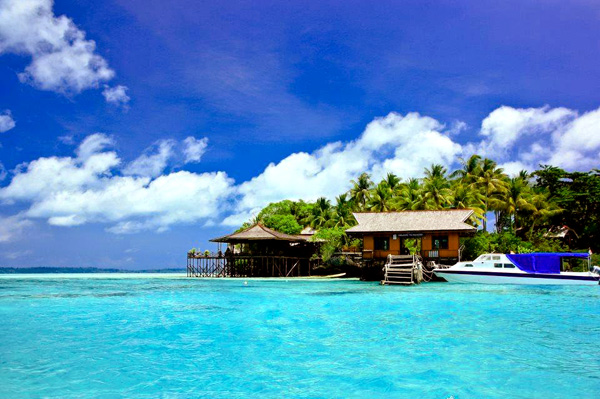
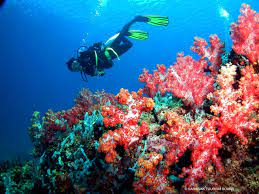
3.0 Mountains and Caves
- Majestic Mount Kinabalu: Mount Kinabalu Park in Kota Kinabalu, Sabah, is a UNESCO World Heritage site, hosting Southeast Asia’s highest peak at 13,455 ft. The park is a haven for over 5,000 plants, 300 birds, and 100 mammal species.
- Wonders of Gunung Mulu: Gunung Mulu National Park in Miri, Sarawak, spans 528 km2 and is a UNESCO World Heritage Site. Famous for its limestone cave systems, it features the world’s largest natural chamber, the Sarawak Chamber.
3.3 Product Benefits
- Rainforest and Wildlife Reserves
- Unique Adventure: Jungle trails and boat rides offer an unparalleled exploration.
- Wildlife Observation: Witness diverse wildlife in their natural habitat.
- Lush Jungle Experience: Immerse in the vibrant sights and sounds of Borneo’s lush greenery.
- Beach, Marine Park, Island, Dive Site
- Tropical Fun: Appeal to North Asia tourists seeking tropical experiences.
- Coastal Beauty: Attract inland tourists with pristine shores and sea waves.
- Diverse Activities: Marine parks and islands offer exclusive features and water-based activities.
- Tranquil Diving: Explore vibrant coral reefs in tranquil waters.
- Mountain and Cave
- Unique Experiences: Distinctive adventures, from conquering Mount Kinabalu to exploring caves.
- Summit Thrills: Enjoy exhilarating summit experiences and scenic landscapes.
- Cave Wonders: Thrilling underground adventures, especially in Mulu Caves.
- Benefits to Investors
- Unique Investment: Invest in eco-tourism with unparalleled features.
- Guaranteed Income: Engage target tourists early for a steady income.
- Exclusive Rights: Enjoy exclusive development and management rights.
3.4 Product Competitive Advantages
- Special Attributes
- Unique Environment: Leverage Borneo’s distinct natural features.
- Targeted Demand
- Strategic Alliances: Secure steady visitors through alliances with North Asia corporations.
- Anchor Visitors: Attract and secure anchor visitors for consistent demand.
- Branding Excellence
- Partnership Advantage: Collaborate with international operators for a renowned brand and high standards.
- Expert Team
- Specialized Partners: Benefit from top specialists in eco-tourism for project success.
4.0 Market
4.1 Market Segments
- Rainforest and Wildlife Reserves
- Beach, Marine Park, Island, and Dive Site
- Mountain and Cave
4.2 Target Market Strategy
Eco-tourists have diverse requirements:
- Emotion:
- Connection and Fun: Shared experiences, self-enrichment, stress release, and thrill-seeking.
- Physical:
- Accommodation, Transportation, Infrastructure, Attractions, and Local Cuisine.
- Financial:
- Competitive Cost, Value-added Services, and Budget-Friendly Options.
- Spiritual:
- Creating Pleasant Memories and Meaningful Experiences.
- Quality:
- High Standards Resulting in Unexpected Satisfaction.
Strategies to meet regional market demands:
- Holistic:
- Implement a comprehensive destination management strategy from planning to operation.
- Differentiation:
- Differentiate the product based on cost and service quality.
- Features:
- Timely addition of new attractions to enhance destinations.
- Value:
- Integrate nature tourism with culture, experiences, and special events to provide added value in exploration, discovery, sightseeing, shopping, food, and local culture.
Australia’s example of a TXA platform to promote service and products data
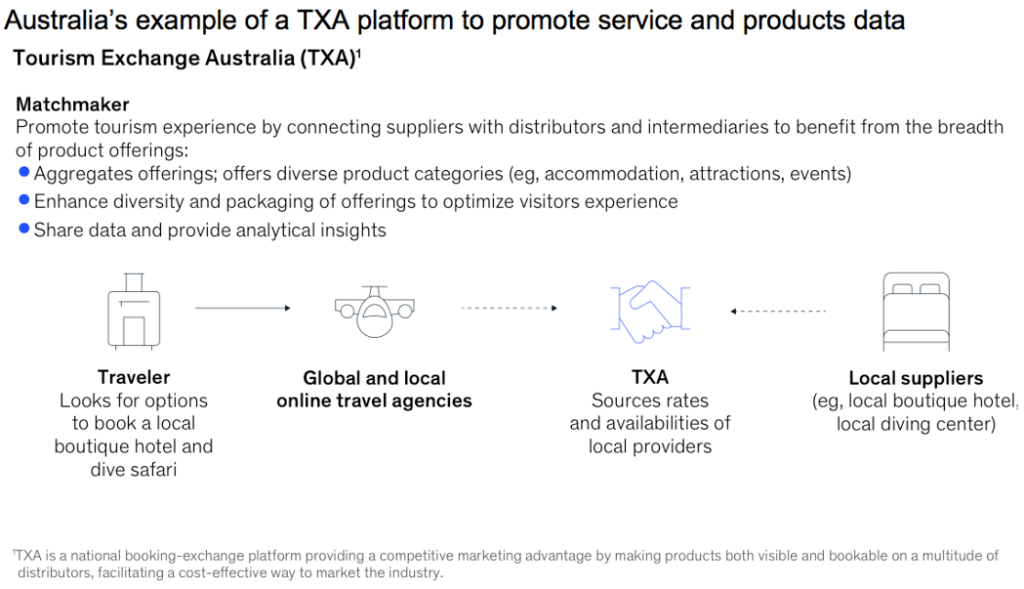
4.3 Market Needs
- 2019 Visitor Statistics:
- Brunei: 0.3 million
- Sabah: 4.2 million
- Sarawak: 4.7 million
- Kalimantan: 4.4 million (East Kalimantan 2015)
- 3 million international tourists; the rest were domestic visitors.
Projection:
- Short Term: Aim for 5 million tourists from North Asia and India in a 5-year program.
- Mid Term: Expand the program to attract 7.5 million tourists in a 10-year plan.
4.4 Growth Drivers
- Asia: Expanding middle class in the Asia Pacific regions.
- Eco Tour: Growing global interest in nature tourism.
- Facilities: New tourism infrastructure and investments in eco-tourism destinations.
4.5 Key Customers
- Short Term: North Asia, Indochina, Russia, India, Middle East, Indonesia, Malaysia, and Brunei.
- Mid Term: Oceania, Europe, and USA.
4.6 Competition and Industry
- Travel & Tourism Competitiveness Index 2019:
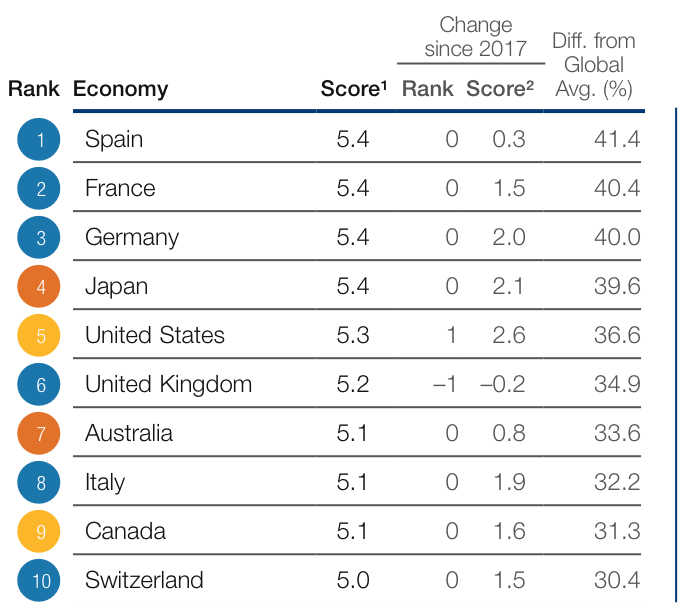
- 2018 Most Visited Destinations by International Tourist Arrivals:
- France: 89 million
- Spain: 82 million
- United States: 79 million
- Italy: 61 million
- China: 62 million
- Key Players in Global Tourism:
- American Express, BCD Travel, Booking Holdings, Carlson Wagonit, Expedia Group, Flight Centre, Trip.com Group.
- Key Players in Global Ecotourism:
- Contiki, Exodus Travel, G Adventures, Intrepid Travel, National Geographic Expeditions, Nature Adventure Travel, REI Adventures, WWF.
- Key Players in China Ecotourism:
- China Travel International Investment Hong Kong, Emei Shan Tourism, Huangshan Tourism, Lijiang Yulong, Tibet Tourism, Zhang Jia Jie Tourism Group.
- Key Players in Local Market:
- Sabah: Sabah Park, Sabah Tourism Association, Sabah Tourism Board.
- Sarawak: Sarawak Forestry Corporation, Sarawak Tourism Board, Sarawak Tourist Federation.
- Brunei: Tourism Development Department.
- Indonesia: Ministry of Tourism, Wonderful Indonesia. https://www.indonesia.travel/au/en/general-information/wonderful-indonesia
- Listed Co:
- Avillion Bhd,
- Bayu Buana,
- Destinasi Tirta Nusantara,
- Iconic Worldwide Bhd, and
- Warisan TC Holdings Bhd.
5.0 Operation
5.1 Establish an entity to incorporate all the stakeholders as partners
5.2 Partnership: MNCs with an extensive network–Expedia Group examples
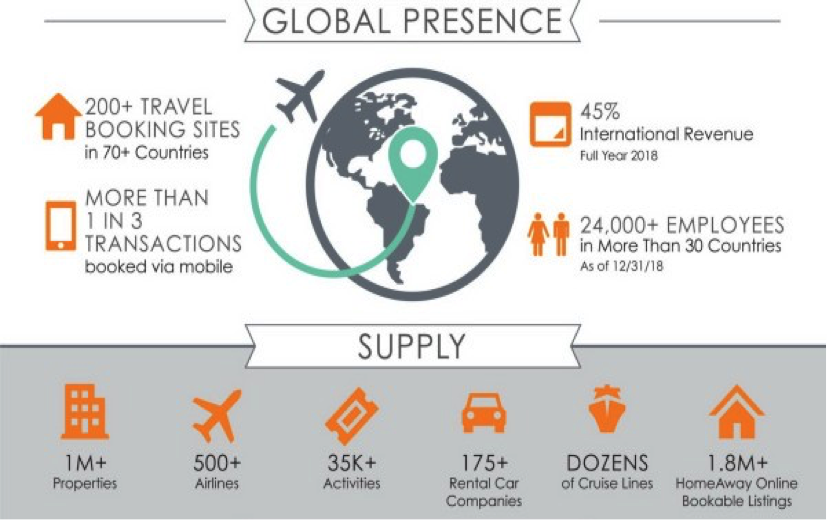
5.3 Operation and services – Trip.com example
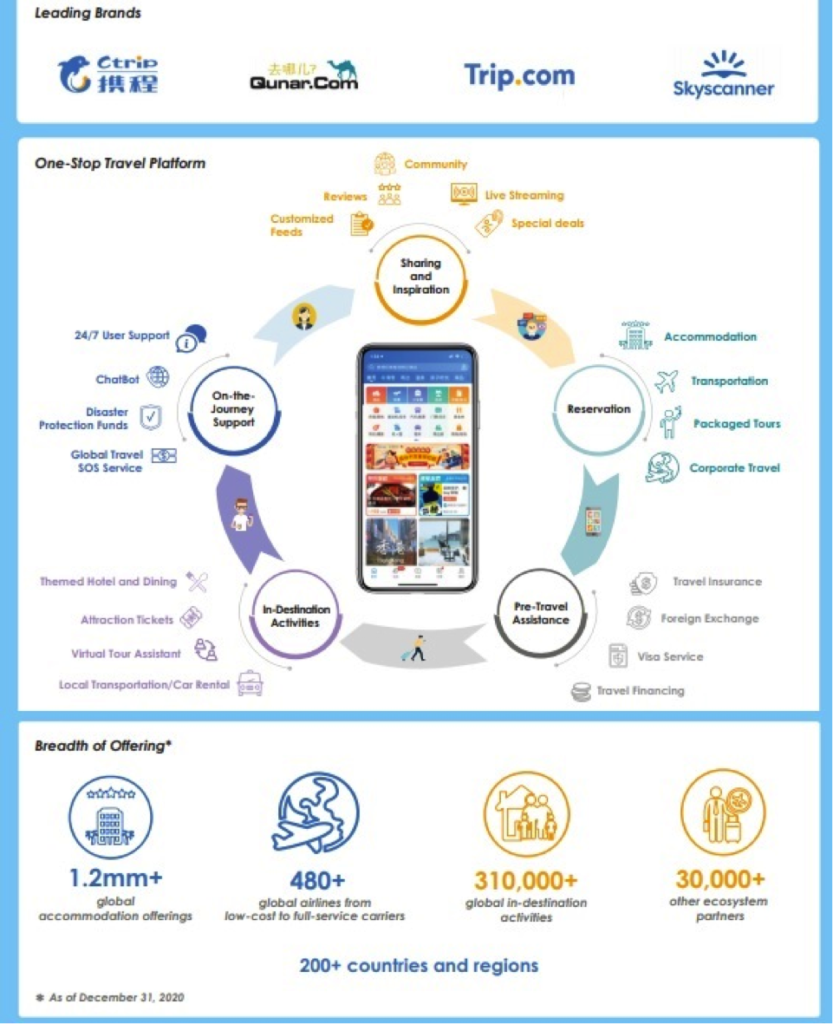
6.0 Financial Implications
6.1 Investment Segment Strategy
- Partners:
- Align with strategic stakeholders for integrated, all-inclusive services and programs.
- Customers:
- Partner with target MNCs to secure anchor tourists.
- Attractions:
- Collaborate with the local tourism board on eco-attractions.
- Transportation:
- Partner with airlines and ground transport for bulk fare offerings.
- Hotel:
- Secure 5-star hotel wholesale rates with a new hotel group.
- Tour Package:
- Partner with international travel companies to attract premium tourists.
- Operators:
- Joint partnership with international eco-tourism developers, tour operators, and local travel agents to develop additional attractions such as aquariums, cable cars, canopy walks, nature theme parks, wildlife zoos, diving, beach and island activities, adventure tours, outdoor water parks, horse riding, jungle trails, balloon rides, mountain climbing, cave exploration, and other innovative attractions.
Investment - Start-up Capital: • 5 million tourists X 40% X US$10/tourist = US$20 million (Start-up stage)
Case Studies
Case study 1: Target market visit to nature attractions

Case study 2: Big spender profile: US$2,035–US$2,774
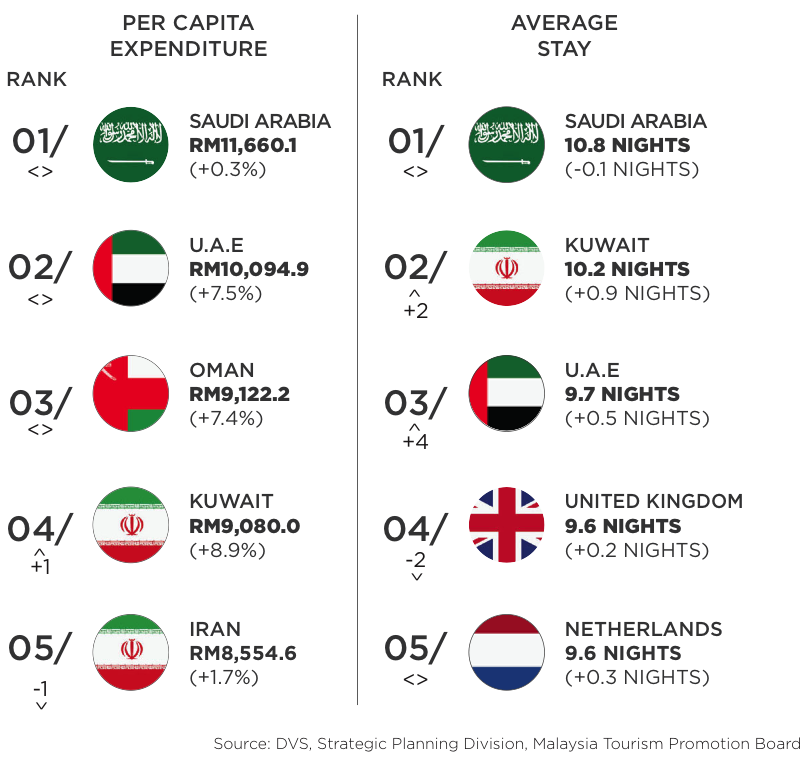
Case study 3: Per capital expenditure average: US$785

Case study 4: Tour component = 6.3%
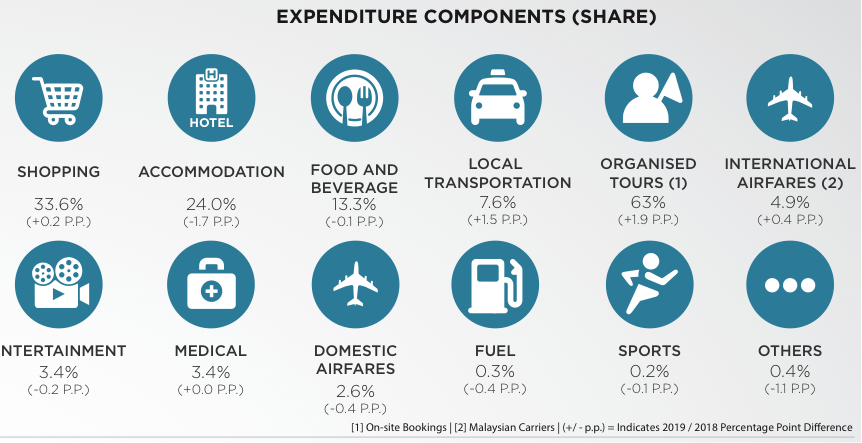
6.2 Production Cost
Start-up stage cost US$30.2 million X 60% = US$18.12 million/year
6.3 Prices and Revenue
Start up stage revenue 5 million tourists X 40% X US$2,400 X 6.3% X 10% service fee = US$30.2 million/year
Price references
Case Study 1: Rainforest and Wildlife Reserve
- Maliau Basin Tour Packages (4 days/3 nights): US$1,200 per person (accommodation, meals, and tour included)
- Danum Valley Tour Packages (3 days/2 nights): US$2,600–US$3,700 per person (accommodation, meals, and tour included)
- Tabin Wildlife Reserve Tour Package (3 days/2 nights): US$1,500 per person (accommodation, meals, and tour included)
Case Study 2: Beach, Marine-park, Island and Dive Site
- Lankayan Island Tour Packages (3 days/2 nights): US$975 per person (accommodation, meals, and dive included)
- Sipadan Kapalai Dive Resort Tour Packages (3 days/2 nights): US$1,030 per person (accommodation, meals, and dive included)
- Tanjung Aru Beach Resort and Tunku Abdul Rahman Marine Park Tour Packages (4 days/3 nights): US$875 per person (accommodation, meals, and tour included)
- Mabul Island Resort Tour Packages (3 days/2 nights): US$1,390 per person (accommodation, meals, and dive included)
- Derawan Dive Resort Tour Packages (6 days/5 nights): US$1,530 per person (accommodation, meals, and dive included)
- Dive Derawan, Maratua, Kakaban, Talisayan, and Sangalaki Liveaboards Dive Package (8 days– 0 days): US$2,740 – $6,000 per person (accommodation, meals, and dives included)
- Miri Dive 5-star Hotel Tour Packages (3 days/2 nights): US$168 per person (accommodation and dive included)
- Miri Luconia Shoals Liveaboards Dive Package (4 days/4 nights): US$1,100 per person (accommodation, meals, and tour included)
Case Study 3: Mountain and Cave
- Mount Kinabalu Tour Package (3 days/2 nights): US$915 per person (accommodation, meals, and climb fee included)
- Mulu National Park Headhunter Trails Tour Package (3 days/2 nights): US$760 per person (accommodation, meals, and tour included)
- Mulu National Park Caves Tour Package (3 days/2 nights): US$420 per person (accommodation, meals, and tour included)
6.4 Financial Returns

In 2019, Indonesia’s tourism investment proposal included the following projects:
- Tlogo Wening Tourism Park Central Java
- Total Area: 3,250 Ha
- Estimated Investment: US$25 million
- Concession Period: 20 years
- Projected Income: US$3.4 million
- IRR: 18%
- NPV: US$6.7 million
- Payback Period: 7 years 2 months
- Panjang Island Central Java
- Area: 19.2 Ha
- Estimated Investment: US$2.13 million
- Concession Period: 30 years
- Projected Income: US$1.4 million
- IRR: 15%
- NPV: US$1.3 million
- Payback Period: 16 years
- Sigandu Beach Central Java
- Area: 90 Ha
- Estimated Investment: US$12.58 million
- Concession Period: 25 years
- IRR: 22%
- Payback Period: 8 years
A study in 2020 with data from The World Bank and World Travel and Tourism Council showed the following countries with ROI of their tourism investment versus the income.
The top countries with the highest return on ROI in percentage terms:
Country ROI Investment B$ Income B$
Dominica 1720% 0.01 0.18
Bermuda 1610% 0.03 0.51
Georgia 1588% 0.18 2.97
Grenada 1563% 0.03 0.50
Mauritius 1543% 0.12 2.01
The top countries with the highest ROI in real term:
Country ROI Investment B$ Income B$
Thailand 705% 7.73 62.16
Macao 1224% 2.70 35.73
Qatar 821% 1.71 15.76
Croatia 832% 1.19 11.13
Hungary 506% 1.39 8.45
Source: Alpha Travel Insurance 2020
2019 International group

2019 China tourist destination group
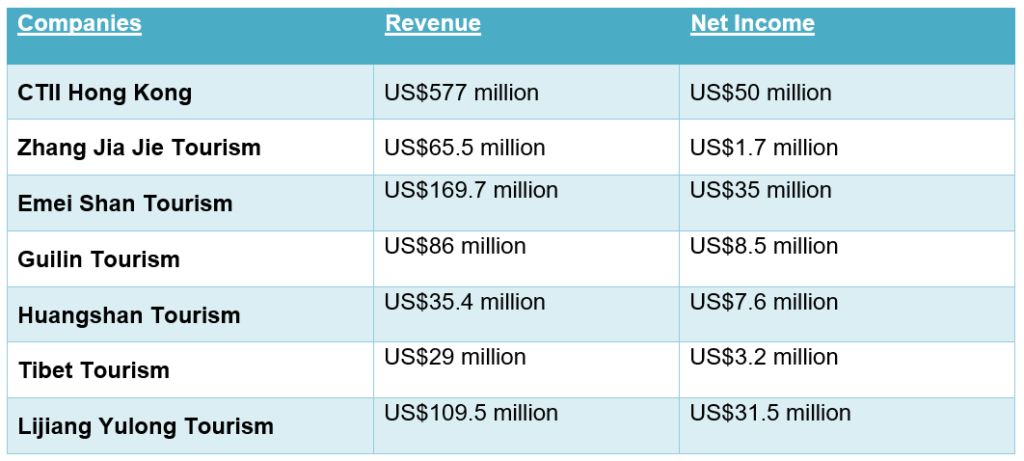
2019 Local group

6.5 Source of funding
1. Strategic Investors:
- New Investor: The project leadership team with a focus on business and financial management.
- Financier: Tourism private equity groups.
- Operator: Involvement of international and local tourism operator groups.
- Target Market: Attracting investments from North Asia, China, Central Asia, and European multinational corporation groups.
- Hotels: Collaboration with hotel groups for accommodation aspects.
- Transport: Involvement of airline and ground transport groups.
- Government: Potential support and collaboration with eco-tourism destinations group.
2. Private Equities and Investors
- Apex Capital
- Apollo Global Management
- Artisan Partners
- Bank of China Investment Management
- Bank of Communications Schroder Fund Management
- BlackRock
- Blackstone
- Capital Group
- Capital World Investors
- Capital Research & Management
- Carlyle Group
- Charles Schwab Investment Management
- China Investment Corp (Investment Management)
- China State-Owned Assets Supervision & Administration Commission
- China Universal Asset Management
- Colony Capital
- Credit Suisse Asset Management
- D1 Capital Partners
- Dimensional Fund Advisors
- Dodge & Cox
- FIAM
- Fidelity International
- Fullgoal Fund Management
- General Atlantic
- Geode Capital Management
- GIC
- GF Fund Management
- Gold State Capital Fund Management
- Guangzhou Shanggyo Investment Management
- HSBC Jintrust Management
- HuaAn Fund Management
- ICBC Credit Suisse Asset Management
- Invesco Great Wall Fund Management
- JP Morgan Asset Management
- KKR
- Krane Funds Advisors
- Kuwait Investment Authority (Investment Management)
- Lazard Asset Management
- Lion Fund Management
- Lone Pine Capital
- Morgan Stanley Investment Management
- Norges Bank Investment Management
- OppenheimerFunds
- PAR Capital Management
- Paradice Investment Management
- Penghua Fund Management
- Pennant Capital Management
- Platinum Investment Management
- Pzena Investment Management
- Rongtong Fund Management
- Ruida Asset Management
- Schroder Investment Management
- SCP Private Capital
- SSgA Funds Management
- Stadia Capital
- Tian Hong Asset Management
- Tourism Solutions International
- T. Rowe Price Associates
- Vanguard Group
- Voya Investment Management
- Wellington Management
- Yinhua Fund Management
- Zhong Ou Asset Management
3. Consultants, development and funding managers to the eco-tourism industries
- Tony Charters and Associates
- BCG (Boston Consulting Group)
- Eco-Tourism Australia
- European Travel Commission (ETC)
- International Ecotourism Society
- KPMG
- McKinsey & Company
- PWC (PricewaterhouseCoopers)
- Travel and Tourism Research Association
- World Economic Forum
- World Tourism Organization (UNWTO)
- World Travel & Tourism Council (WTTC)
6.6 The Way Forward
- Eco Theme: Creating a cohesive eco-tourism experience by uniting 21 destinations under a single entity. This approach can enhance the overall appeal and efficiency of the tourism experience.
- Development: Investing in the planning, development, and operation of these destinations to meet international standards. This commitment to quality ensures a positive and sustainable impact on the environment and visitor experience.
- Listing: Exploring the option of listing the entity, which can be a strategic move to raise additional funds for expanding and enhancing attractions. It also brings transparency and accountability to stakeholders.
- Global: Establishing global strategic partnerships, especially with well-established and UNESCO-listed nature sites stakeholders and operators. This can contribute to the credibility and recognition of your eco-tourism initiative on a global scale.
7.0 Management Team
7.1 Key Management Team
- Mentors: visionary pioneers and industry leaders with a vast global network. They provide invaluable guidance and inspiration.
- Coaches: mission-oriented industry experts who offer practical solutions to challenges, ensuring the team stays focused on its objectives.
- Partners:
- A project leadership group with successful development, operation and financial management of the eco-tourism industry.
- Accredited government agency with access to nature sites.
- A reputable investment manager with access to sources of funding in the eco-tourism industry.
- An international online travel and tour operator.
- A reputable local eco-tourism tour operator with procurement capabilities, local network, sound financial status and solid support from the government.
- Transport groups for international and domestic travel.
- Target market customers, including MNCs.
In the eco-tourism industry, several global leaders have made significant contributions, shaping its growth and success. Here is a list of some of these remarkable individuals, honoured for their vision and dedication:
- Rich Barton
- Tony Charters
- James Jianzhang Liang
- Rich_Barton
- Bruce Poon Tip
- Graham Turner
- Darrell Wade
These are just a few of the outstanding professionals and captains of the industry. The readers are encouraged to explore further and conduct their research to learn more about the management teams in this dynamic field.
7.2 Key Management Team Model
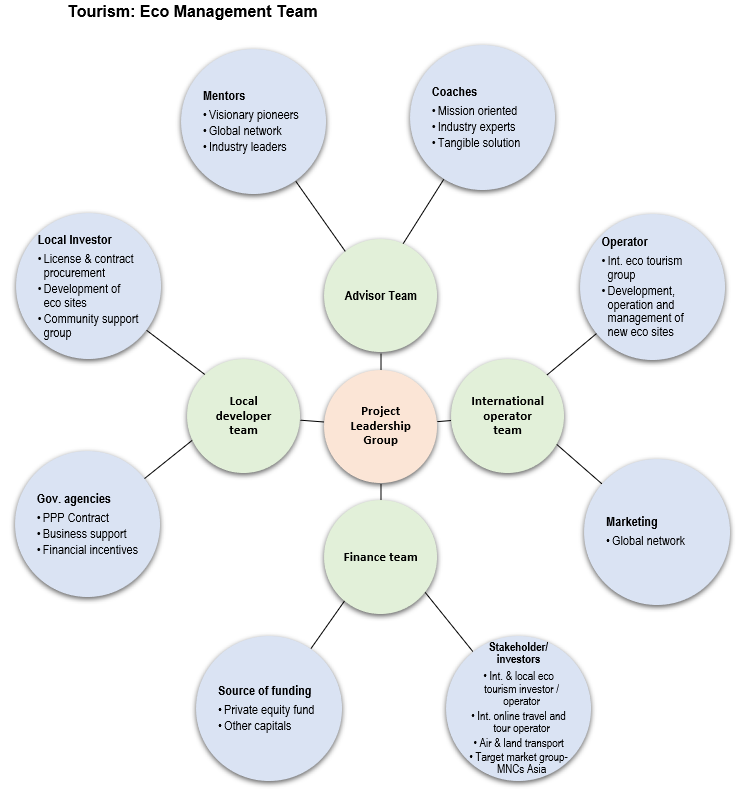
8.0 Unique Business Model
8.1 Successful Track Record:
- Location Features: Emphasizing the importance of choosing locations with proven visitor appeal.
- Anchor Tourists: Ensuring a secure target market segment for consistent income.
- International Team: Highlighting the significance of a high-quality, experienced team.
8.2 Entry Model:
- Leasing: Private investors collaborate with the government for a fixed leasing fee.
- Profit Share: Investors share profits based on agreed terms.
- Share-Holding: Joint formation of a share-holding tourism company with shared responsibilities.
- M & A: Merging or acquiring existing operators for rapid market entry.
- Initial Move: Starting with a management fee for provided services.
8.3 Unique Business Model:
- Established: Focusing on established destination sites for initial investment.
- Target Market: Forming strategic alliances in the planning stage to secure anchor tourists.
- Team: Employing a top international management team with a proven track record.
- Integration: Vertical and horizontal integration of team players for improved efficiency.
- Competitive Advantage: Incorporating into a single entity for a national chain with global exposure and competitive advantages.
Business model example–Expedia
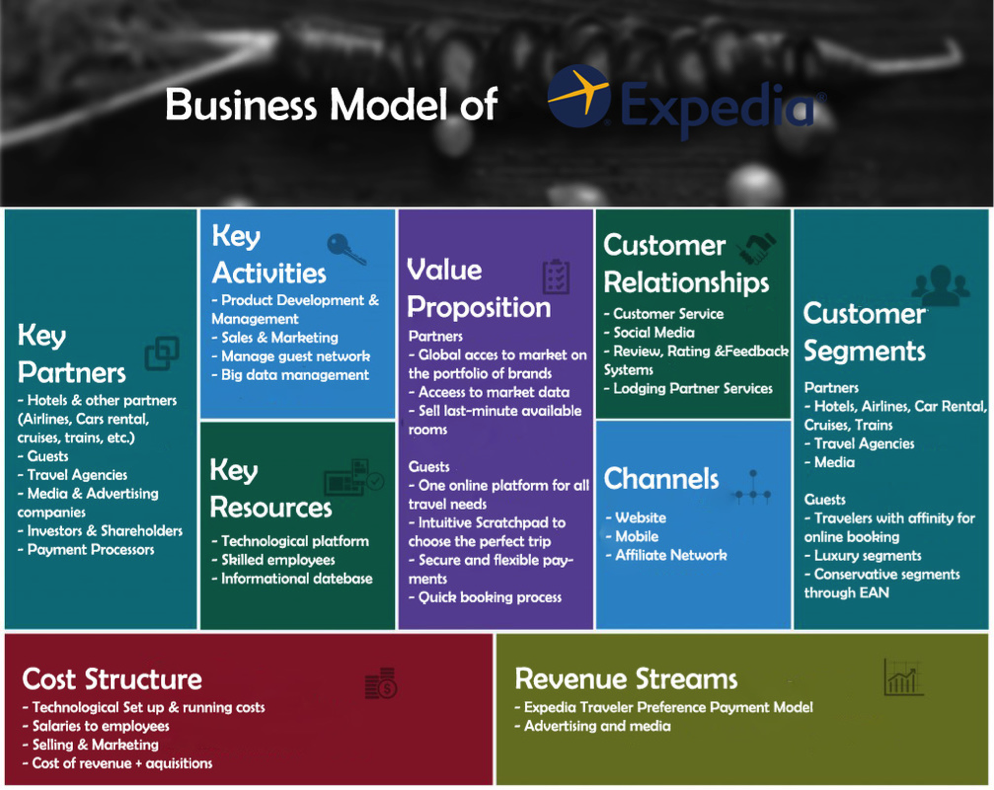
9.0 Key Success Factors & Risk Mitigation
9.1 Key Success Factors:
- Site: Unique features and attractions of nature tourism projects.
- Currency: Favourable currency exchange rates for international tourists.
- Economy: Stable economies in the target tourist countries.
- Value: Satisfying tourists with a valuable experience, destinations, pricing, and service.
- Goals: Achieving business, cash flow, and profit goals.
9.2 Risk and Mitigation:
- Health: Prioritizing COVID-19 vaccination certifications for health and safety.
- Economic: Host countries supporting tourism investment with policies and incentives.
- Timing: Planning and developing projects now for tourism recovery after 2024.
- Market: Mitigating revenue risk through secure tourist numbers, reliable financing, and pricing strategy.
- Partners: Strategic alignment with investors, operators, financiers, developers, and government agencies.
- Financial: Generating revenue through assurance of target customers and achieving cost reduction.
10.0 Exit Strategy
10.1 Form of Exit
- IPO: Selling shares as part of an Initial Public Offering.
- M & A: Strategic acquisition by another eco-tour operator.
- Sale: Selling to another private equity firm.
- Buyback: Management buying back equity stake from private investors.
10.2 Benefits to New Investors:
- Market: Targeting growing middle-class markets in North Asia, India, and the Middle East.
- Revenue: Recurring revenue with the growth of target markets.
- Price: Competitive pricing.
- Risk: Secure demand and a structured price reduce risk exposure.
- Product: Expanding new product lines to new destination tourism attractions.
- Opportunity: Capturing new market opportunities and additional revenue.
- Exit: After the seventh year when business and cash flow are stable.
10.3 Attraction of the Business to New Investors:
- Market: Capturing additional market share in the Asia Pacific regions.
- Cost: Acquisition opportunity for cost reduction and performance improvement.
- EBITDA: Competitive advantages of vertical integration and improved bottom line.
- Leader: New leadership team improving business and financial performance.
- Distribution: Access to new markets, products, and distribution channels.
- Revenue: Additional revenue through the new acquisition.
10.4 Winning Strategy:
- Strategy: Vertical integration model and business alliance of stakeholders.
- Team: A powerful management team with top global players.
- Win-Win: A profitable business with shared rewards among stakeholders.
